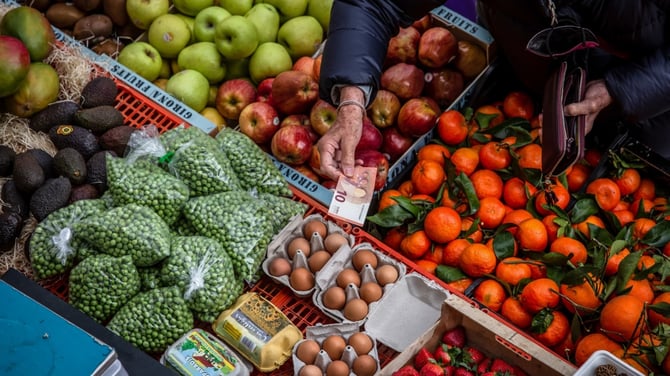Eurozone Inflation Climbs to 7% after Months of Cooling

The eurozone’s annual inflation climbed to 7% in April, a surprising development after the reading fell for five consecutive months.
Although the increase was small, 0.1% up from 6.9% in March, analysts feel it could be enough to prompt the European Central Bank (ECB) to raise interest rates after this week’s council meeting.
The ECB has upped rates aggressively since last July to cool rampant inflation and may be forced to continue this path after the latest reading.
After Russia’s invasion of Ukraine at the beginning of 2022, energy prices skyrocketed and were responsible for pushing consumer prices higher across the eurozone, hitting a high-water mark of 10.6% in October.
Inflation has been gradually cooling since then, thanks to a fall in the rate of energy price increases.
However, inflation is still far above the ECB’s 2% target.
Food and drink prices keep rising in the eurozone, putting more pressure on European families, even though the rate of increase has reduced from 13.6% in April after it clocked 15.5% in March.
Core inflation in the single currency region, minus traditionally volatile food and energy prices,
dipped somewhat to 5.6% in March from 5.7% in February.
What does this mean for me?
Some economists believe the ECB will increase interest rates by 50 basis points, thereby replicating the same increase it announced in the prior three meetings. However, other economists are betting on a downshift by the ECB, leading to a lesser 25 basis point hike.
More News
.webp)
Japan’s Rate Shift Is Rippling Through Global Bond Markets
1 week ago

China’s Growth Engine Stalls as Consumers and Investors Pull Back
1 week ago

Egypt’s Recovery Gains Traction as Household Pressure Lingers
2 weeks ago

OECD Warns AI and Tariffs Will Test the Global Economy
3 weeks ago

Zero Tariffs, Higher Drug Bills as US and UK Reset Pharma Trade
3 weeks ago

Catastrophe Bonds Go Global as Climate Risk Meets Yield Hunting
4 weeks ago
.webp)
Canada Shields Steel and Lumber Industries From Tariffs
1 month ago

Trump Drops Selected Tariffs in Response to Inflation Pressures
1 month ago